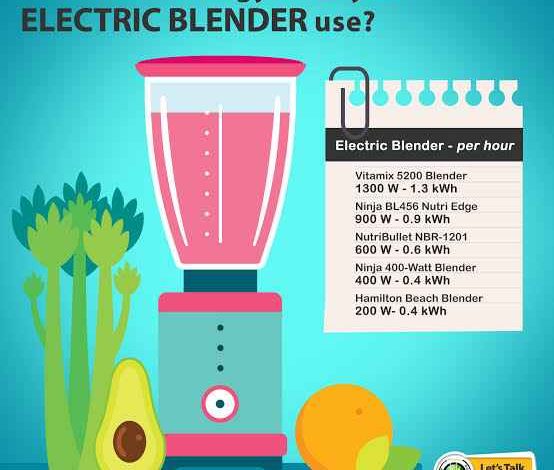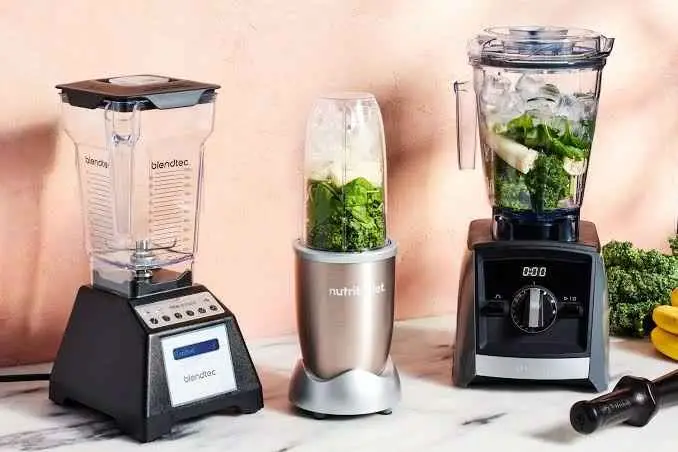How Many Watts Does a Blender Use? Understanding Blender Power Consumption

Blenders are among the most versatile kitchen appliances, used for tasks ranging from blending smoothies to crushing ice and making soups. However, have you ever wondered how much power your blender consumes? Understanding blender wattage is not just about knowing how powerful it is but also about its energy consumption and impact on your electricity bill.
In this detailed guide, you’ll learn about the average wattage of blenders, how wattage affects energy use, and tips to choose a blender that fits your needs without overspending on electricity. Let’s dive in!
Why Knowing Blender Power Usage Is Important

Every appliance in your home adds to your electricity bill, and blenders are no exception. When buying a blender, many people focus on features like speed, durability, and design, often overlooking its energy consumption. Yet, the wattage of a blender can significantly affect:
- Electricity Costs: High-wattage blenders consume more power, and frequent use can increase your monthly electricity bill.
- Performance Efficiency: While higher wattage often means better performance, using more power than necessary wastes energy.
- Environmental Impact: Reducing electricity usage by choosing an energy-efficient blender contributes to a greener environment.
By understanding wattage, you can make smarter purchasing decisions, save money, and reduce your environmental footprint.
What Is the Average Wattage of a Blender?

Blenders vary widely in wattage, typically ranging from 300 watts to over 1500 watts. The type and purpose of the blender often determine its wattage.
Common Blender Wattage Categories
- Personal Blenders (200-600 watts): Designed for single servings, personal blenders are perfect for smoothies, protein shakes, and soft ingredients. Their low wattage makes them energy-efficient for everyday use.
- Standard Blenders (500-1000 watts): These are the most common types found in households. They handle various tasks, such as blending soups, sauces, and soft fruits, without consuming excessive energy.
- High-Speed Blenders (1000-1500 watts): High-performance blenders like Vitamix and Ninja models can crush ice, blend nuts into butter, or handle frozen fruits with ease. These models are ideal for heavy-duty tasks but consume more electricity.
Why does wattage vary so much? Simply put, higher wattage means the motor is more powerful, allowing the blender to handle tougher ingredients. However, this also means more electricity is consumed during use.
The wattage you need depends on the tasks you perform. For light blending tasks, a lower wattage is sufficient, while heavy-duty tasks may require a high-wattage blender.
How Much Electricity Does a Blender Consume?

The electricity a blender consumes depends on its wattage and how long it runs. Here’s a simple formula to estimate its power usage:
Electricity Consumption (kWh) = (Wattage × Hours of Use) ÷ 1000
For example, if you use a 1000-watt blender for 10 minutes (0.167 hours) per day:
- Daily consumption: (1000 × 0.167) ÷ 1000 = 0.167 kWh.
- Monthly consumption: 0.167 kWh × 30 days = 5 kWh.
With an average electricity cost of $0.13 per kWh, the monthly cost to use the blender would be:
5 kWh × $0.13 = $0.65.
Although this may seem low, the cost can increase with frequent use or if you rely on a high-wattage blender for long periods.
Blender Wattage and Its Impact on Your Energy Bill

Blender wattage directly impacts your energy costs. Here’s how:
1. Higher Wattage Equals Higher Power Consumption
A 1500-watt blender uses more energy than a 500-watt model, even if used for the same duration. If you regularly use a high-wattage blender, the extra power consumption can add up, especially in a household with multiple appliances.
2. Frequency of Use Matters
A blender used for 10 minutes daily might not seem significant, but if you’re blending multiple times a day or using it for extended periods, the cumulative electricity usage increases.
3. Long Blending Sessions Are Costly
Recipes like homemade nut butter or pureed soups often require extended blending times, which can substantially increase energy consumption.
When comparing appliances, always factor in both wattage and frequency of use to estimate their impact on your energy bill.
Understanding how wattage affects electricity costs helps you choose a blender that balances performance with affordability.
How to Choose the Right Blender Based on Wattage

Not all are created equal, choosing a blender with the right wattage ensures you get the performance you need without overpaying for electricity. Here’s how to decide:
1. Identify Your Blending Needs
- For Basic Tasks (Smoothies, Soups): A 300-600 watt blender is sufficient for blending soft fruits and liquids.
- For Crushing Ice or Frozen Foods: Look for blenders with 1000 watts or more to handle tough ingredients.
- For Heavy-Duty Use: High-speed blenders with wattages above 1200 watts are ideal for professional-level tasks.
2. Opt for Energy Efficiency
Many modern blenders are designed with energy-saving features. Look for labels like “Energy Star Certified” to ensure efficiency.
3. Avoid Overkill
Bigger isn’t always better. A high-wattage blender might be tempting, but if you’re not using it for heavy-duty tasks, you’re wasting energy and money.
Are High-Wattage Blenders Always Necessary?

High-wattage blenders are powerful and versatile, but they’re not always the best choice.
Advantages of High-Wattage Blenders:
- Excellent for crushing ice, grinding nuts, and blending frozen fruits.
- Faster blending times reduce wear and tear on the motor.
- Ideal for frequent, heavy-duty use in larger households.
Drawbacks of High-Wattage Blenders:
- Higher electricity consumption.
- Often more expensive to purchase and maintain.
- Unnecessary for light blending tasks, which can be done with lower-wattage models.
Evaluate your usage habits before investing in a high-wattage blender to avoid overspending.
Many consumers assume that higher wattage always means better performance, but this isn’t entirely true.
When Lower Wattage Is Sufficient:
- Making soft ingredient smoothies.
- Blending liquids like soups or juices.
- Occasional, short blending tasks.
Pro Tip: If energy efficiency is your priority, evaluate how much blending power you actually need before opting for a high-wattage blender.
Energy-Saving Tips for Using Your Blender Efficiently

Even if you own a high-wattage blender, you can reduce its energy consumption with these simple tips:
- Use Short Blending Bursts: Utilize the pulse function to minimize continuous power usage.
- Avoid Overloading: Overfilling the blender increases motor strain and blending time.
- Blend Smartly: Pre-chop hard ingredients to reduce blending duration.
- Unplug When Not in Use: Many appliances consume standby power when left plugged in.
By adopting these habits, you can enjoy the benefits of your blender while lowering your electricity costs.
Comparing Blender Wattage Across Popular Brands
Each brand offers blenders with different wattage and energy efficiency. Here’s a quick comparison:
- Ninja Blenders: Known for their power, ranging from 700 to 1500 watts. Great for heavy-duty tasks but less energy-efficient.
- Vitamix Blenders: High-performance models with wattages of 1200-1500 watts, ideal for professionals.
- NutriBullet Blenders: Lower wattage models (300-600 watts) designed for simple, quick tasks.
When comparing brands, consider both performance and energy efficiency to find the best fit for your needs.
How to Calculate Blender Electricity Costs

Follow these steps to estimate your blender’s impact on your energy bill:
- Find the Wattage: Check the blender’s label or user manual.
- Estimate Usage Time: Track how long you use the blender daily or weekly.
- Apply the Formula: Multiply wattage by hours of use, then divide by 1000 to get kWh.
For example, a 1200-watt blender used for 15 minutes daily:
- Daily consumption: (1200 × 0.25) ÷ 1000 = 0.3 kWh.
- Monthly consumption: 0.3 kWh × 30 = 9 kWh.
At $0.13 per kWh, the monthly cost is 9 × $0.13 = $1.17.
Conclusion: Make an Informed Blender Choice
Blender wattage not only determines its performance but also impacts electricity usage and costs. While high-wattage models excel in heavy-duty tasks, energy-efficient blenders can save money for light or occasional use.
Now that you know how to calculate blender wattage and electricity costs, take a moment to assess your current blender. Does it align with your needs, or is it time to upgrade to a more efficient model?
If it doesn’t meet your needs, take action today by choosing a blender that strikes the perfect balance between power and energy efficiency—your wallet (and the environment) will thank you!
